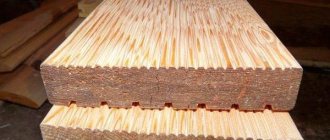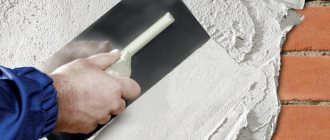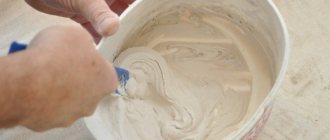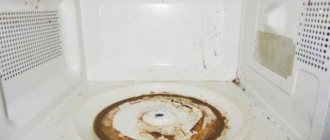Alkyd paints
The basis of the material is varnish mixed with various fillers, solvents and coloring pigments.
The advantages of paint include:
- effective protection from external influences;
- resistance to temperature changes;
- elasticity;
- long-term preservation of the original color;
- quick drying.
The main disadvantage is fragility. You will have to repaint the container quite often, i.e. waste money and time.
Briefly about the main thing
The success of protecting a container from corrosion directly depends on how the barrel was prepared. The more thoroughly the walls and bottom were cleaned of plaque, the better. You shouldn't skimp on primer either. It guarantees a strong grip.
You need to choose paint based on the purpose of using the tank. Some names are suitable for drinking water, but more stable solutions are suitable for contact with hot water.
It is very easy to make a mistake if you do not follow the advice and sequence of actions. Carefully study each stage and its requirements.
Ratings 0
Polyurethane paints
The advantages of this line of materials:
- resistant to various influences, including chemicals;
- have high performance characteristics;
- harmless and elastic;
- have significant wear resistance;
The only negative that cancels out all the positive aspects is the very high price. Spending money on such raw materials to paint a water container is irrational.
Advantages of painting containers:
It doesn't matter to us what kind of liquid you plan to transport and store. We provide anti-corrosion protection and painting of tanks of any purpose and size - from industrial in large quantities to single orders from individuals. Tested modern equipment and tools allow you to solve complex problems with ease. Even painting a water tank and other containers from the inside is a feasible task for our professionals.
Protective substances are applied only to the previously cleaned surface of the product, which guarantees complete repainting and durability of the coating. The entire range of painting works of any complexity is carried out by our craftsmen in the shortest possible time, so downtime is excluded. When painting externally and internally, a special coating is applied to guarantee long-term reliable protection of the metal from oxidation and corrosion.
The price of our company’s services, despite their high quality and performance, remains extremely affordable not only for large companies, but also for individuals. This not only saves you money, but also ensures safe and long-term operation of metal containers.
Convince yourself of the correctness of your choice by entrusting the work of painting tanks of any type to our masters!
Latex coating
Using these paints you can form a protective coating that resembles rubber. With sharp temperature fluctuations, it stretches or contracts, which is especially important for tanks installed in country baths.
In addition to the above, latex paint:
- has no odor and is produced without the use of harmful substances;
- easy and economical to apply to the surface;
- made from environmentally friendly materials;
- does not form condensation in closed containers.
It is also important that it is much cheaper than enamels and oil paints.
Factors that have a negative effect on paint
Before painting a metal sauna stove, you need to choose a paint, and for this you need to take into account some important factors.
When choosing paint, you should take into account the fact that the surface to be painted will become very hot. Therefore, standard options will not work here. Ordinary paints will not stick to hot metal; they will peel off or burn.
Another point that you should pay attention to when choosing paint for an iron sauna stove: any type of metal expands when heated. Therefore, the material with the lowest value of this indicator is selected for the furnace. There is no metal with an expansion coefficient equal to zero. Accordingly, there is a high probability that the applied paint will crack.
The next factor that should be taken into account when choosing how to paint a brick stove in a bathhouse is the formation of a large amount of steam in the bathhouse. As a result of increased humidity, the paint begins to peel off.
Choosing Modern Paint
Among modern effective anti-corrosion agents, the most popular are:
- mixture with a base of zinc powder (Anticor TsVES No. 2);
- Cetra paint, which allows the use of metal products in extreme conditions;
- enamel paints Ecocin, EP-5116 and KO-870;
- primers AntikorKhim and XC-04 V;
- paints with anti-corrosion properties of the PCV series.
Alumol and Tsinacol paints are also quite popular among buyers, as well as acrylic-urethane enamels, which can also be used to paint a hot water tank.
When purchasing, you need to read the hygienic certificate for the product and make sure that it does not contain harmful substances (for example, lead). After painting, you need to wait for the applied layer to dry, then fill the container with hot water and monitor whether the paint peels off.
What paint should I use to paint the inside of the water tank?
It seems that any dacha owner can understand – or even take to heart – the problem raised by one of our readers. There is a metal water tank at the dacha, welded from sheet iron. Designed for bathing a child in the open air in summer. How best to finish it? What kind of paint should I use that would be environmentally friendly and safe enough, durable enough (so that the paint doesn’t peel off every year), and on an extremely budget-friendly basis?
We became deeply interested in this topic and realized that the issue was not simple.
So - possible solutions. Paint the tank with bitumen varnish. But first you still need to remove the rust. Rust, paint it with anything, everything will come off in a year. Bituminous varnish (Kuzbass varnish) is just a budget option, there is never a shortage, and it is not expensive. It’s better not to regret it and paint it in several layers; it dries quickly and is applied with a regular roller. Well, or with a brush, if you're not too lazy.
The question is - what to arm yourself with in the fight against rust? For example, buy the Tsinkar rust converter in a spray bottle. You can find it in auto stores or household goods stores, it’s an orange bottle.
After spraying the tank (barrel, other container) from the inside, the rust falls off in the form of scale and is galvanized in places. Carefully scrape off the remains with a spatula and wipe the walls from dust. After this, according to eyewitnesses, the paint adheres tightly.
Option two: treat the tank in the same way, with zinc. An anti-corrosion primer can also be used, but is not necessary. And then apply a built-up roofing material with fiberglass. That is, fuse this same material over the entire surface with 5 cm overlaps at the joints. The main thing is that the metal is properly heated and there are no bubbles, and there must be overlaps outside the tank. Properly glued, it lasts a very long time, it is almost 5 mm thick. If possible, consult with roofers, they will help you install it efficiently.
And the outside of the container can be coated with silver with bitumen varnish, or with natural drying oil. Serebryanka works as a protective protection. Vinyl chloride varnishes also have good weather resistance (CV varnish as a replacement for drying oil), but the surface must be thoroughly degreased.
And finally, the old way: clean the inner surface of the tank as much as possible and cover it with milk-based cement, but always the real rustic kind (from bags is not suitable). Milk dries more slowly than water and cement adheres better to iron. This coating lasts quite a long time.
But simply painting a rusty tank from the inside is a waste of time and effort. The slightest particle of rust remaining in a hole in the metal will then cause a breakthrough in the paint layer and will grow.
Material Specifications
Mixtures based on ethyl and silicate (with the addition of zinc powder) are heat-resistant dyes and allow you to heat the water in the tank to the required temperature. In this case, the material is not subject to any changes. According to the manufacturers, their service life is seven years.
Dyes containing red lead can withstand temperatures up to three hundred degrees.
Enamels based on epoxy resin contain elements that slow down the rusting process. Chemical reactions do not occur in containers painted with them, and temperature fluctuations range from minus 50 to plus 120 degrees.
Aluminum powder diluted with liquid glass can withstand temperatures of seven hundred degrees!
How to paint the inside of a metal barrel so that it does not rust from water?
IMHODom › Forums › hands from shoulders › How to paint the inside of a metal barrel so that it doesn’t rust from water?
- This topic has 53 replies, 28 voices, and was last updated 3 months ago by PM.
- The science
- Tomsk
- Trubachevo
And how to cover it so that the water can be consumed as food... or at least washed?
- Tomsk
- Tomsk
If you plan to keep the barrel constantly filled with water, then you don’t need to cover it with anything; after 50 years, put a new one in and that’s it. And if the barrel periodically becomes empty, like a gas tank, for example, then after 30 - 40 years you will change the barrel (IMHO). And nothing is eternal. And if you plan to use water for drinking, then it’s okay that there is rust inside (IMHO), in the sense that this is the least that can be achieved compared to a painted barrel...
While I was writing, the following idea came to mind, to make an “enameled” one out of an iron barrel, how to do this is another question, I saw an enameled Chinese mug, new but with “fringes”... maybe I should contact acrylic artists with such a proposal, they are finishing bathtubs .
- Tomsk
Hardware stores sell special liners for barrels. Something like a plastic bag. It’s very convenient and leaky barrels don’t need to be repaired.
- Trubachevo
To avoid creating a new topic, I’ll ask here:
It is possible to collaborate with your neighbors to bring drinking water. Now the question is: how (in what) to save 2 cubic meters of water for 10-20 days so that it does not bloom?
- Tomsk
)))))))))))))))))) Difficult question IMHO. Make the container airtight ))))))))))))) leave under pressure (small) ))))))))))))))))))))))))))))))))))))))))))))))) How?
Budget options
There are several ways to paint the inside of a water tank using inexpensive raw materials. A cheap material is silverweed powder mixed with a thick foam solution. An inexpensive option is to use various food colorings.
Important!
- Please note that not all paints are resistant to sudden temperature changes.
- The water in the container can be used for various household needs.
Causes of corrosion in the tank
The appearance of rust at the bottom of a hot water tank is common; over time, each barrel becomes covered with an unpleasant sediment. Homemade tanks that are made of sheet metal or new pipes are especially susceptible to this. This process occurs due to the contact of the metal with a hot liquid, which causes plaque to form on the walls. And over time, it transforms into rust. In addition, a bathhouse or sauna is not a place that is used every day, which means there is a constant temperature difference in the room and in the tank. This is the cause of rust. It is not easy to get rid of it; it is advisable to notice deterioration at the initial stage. Otherwise, you will have to buy another tank and protect it from corrosion. So how to deal with this unpleasant effect? Painting will help protect the tank from rust. The main thing is to choose the right dye and thoroughly clean the water tank from previous deposits.
Paint will help protect the surface from rust
Tips for choosing colors
It is not recommended to paint tanks in bright colors of orange, red or yellow. They fade very quickly.
Note!
Three-way valve in a heating system: instructions on how to choose and install correctly in a private home
How to seal a stove so it doesn’t crack from the heat, what solution: review of the most effective methods + instructions
Why the bottom of the battery is cold and the top is hot - let's look at the reasons. Review of recommendations on what to do and how to fix it
If the container is placed outdoors, because... the water in it is intended for irrigation; try to ensure that its color is in harmony with the overall design of the site. Experts recommend using paints that comply with the German RAL color standard.
Preliminary processing
Just painting the tank is not enough. If you do not prepare it first, then all the work will be useless: when the water inside the container is heated, the dye will peel off in pieces, contaminating the water masses. To prevent this from happening, before painting the surface from the inside it is recommended:
- clean from rust, dirt and scale;
- degrease;
- treat with anti-corrosion agents (if there are traces of rust);
- prime if necessary (most anti-corrosion paints are primer-enamels that combine the qualities of these two products).
Cleaning
It is recommended to clean the inner surface of the water tank in the bathhouse mechanically. For this you can use:
- hard metal brush;
- a grinding machine with an attachment for cleaning metal.
Traces of scale and water deposits are carefully removed from the metal base, and traces of rust are cleaned. After complete cleaning, the vessel is first washed with detergent and then rinsed.
If you plan to paint the new tank to prevent corrosion damage, you can simply wash and rinse it. After rinsing, wipe the inner walls dry with a rag and let them dry a little.
Taking into account nuances
You should adhere to a number of simple rules during the work period:
- can be painted either with a regular paint brush or with a spray;
- work should be carried out outdoors;
- if painting takes place indoors, it should be well ventilated;
- Painting can only be done on a well-prepared and level area.
Painting process
To paint the inner walls of a vessel, it is impossible to use the so commonly used and economical roller or spray gun; only a brush can be used. For work it is recommended to purchase:
- wide paint brush for painting walls;
- a small brush to paint seams and joints.
You can paint the inside of the tank in the same way as other metal surfaces:
- Using a wide paint brush, apply a layer of paint onto large substrates without drips or streaks.
- Weld seams and corners are carefully painted with a small brush.
- The product is left to dry completely for several hours (drying time is indicated on the packaging of the product used).
- After the first layer has dried, re-painting is carried out following the same steps.
The instructions for most coloring compositions state that one coat of paint is enough to provide reliable protection, but experienced craftsmen recommend applying another one. This is based on the fact that beginners can make mistakes in their work, for example, unevenly distributing the composition over the surface, poorly painting individual areas. In any case, applying an additional layer will take a little time and money, but the quality of the work will significantly increase.
After painting with paints and varnishes that prevent the development of corrosion, a sauna heating tank will last much longer. The main thing is to use the selected product in accordance with the attached instructions and carefully follow all stages of preliminary preparation of the product for painting.
Hot water containers
Hot water tanks are usually installed in bathhouses. This is the place where, due to the high humidity, the metal is most susceptible to corrosion. Before modern two-component enamel paints and paints and varnishes became available for sale, it was possible to paint the inside of a hot water tank with the following materials:
- aluminum powder diluted with liquid glass;
- a solution of cement and lime;
- red lead for iron.
Many consumers still use these time-tested products today.
Preparatory work
It’s easier and cheaper to independently prepare the container for contact with water. For such purposes, special coatings have been created (enamels, primers, paints, etc.), which can be purchased at specialized retail outlets. To successfully complete the job, you need to carefully study the nuances and acquire the necessary skills and knowledge. We suggest you carefully read the material, which offers options for how to paint an iron water barrel from the inside so that it does not rust.
Before painting the inside of the water container, it must be carefully prepared. If you purchased a new product, you do not need to carry out this procedure. But for old, used tanks it is necessary.
The main stages of work are as follows.
- Cleaning the barrel from visible contaminants. These include leaves, silt, soil and other debris. To do this, you need to drain the water and collect all foreign objects. If necessary, the barrel is washed under high pressure of water (from a hose). Then the barrel must be given at least a couple of hours to dry.
Mechanical cleaning of a barrel with an abrasive sponge Source sdelaysam-svoimirukami.ru
- Inspection and assessment of the condition of the tank. If there are traces of lime, corrosion and rust inside, then you need to get rid of them. A drill with an abrasive attachment, a metal brush or sandpaper is suitable for this (it all depends on the degree of damage). This procedure must be carried out before painting the inside of the water barrel to ensure better adhesion of the metal and paint.
- Degreasing the surface to be treated. A mandatory step that guarantees good adhesion between the container material and the primer (paint, enamel). Regular medical alcohol can be used as a degreaser. Apply it to a lint-free cloth and work each area thoroughly.
A paint brush is the easiest way to apply a solution for degreasing and priming the surface of a barrel Source 1001kraska.ru
- Surface priming. This is done for two reasons - to get the most even surface possible and to provide additional adhesion (adhesion) to the paint.
Priming is a mandatory stage of work Source yandex.net
- Before you paint the inside of a rusty barrel, make sure you have good ventilation and the necessary protection. You will need gloves, construction glasses and a respirator. It is most convenient to apply the solution with a brush or spray.
- To achieve the best result, coloring should be done in 2-3 layers. Before applying each subsequent one, wait until the previous one has dried.
Important! To achieve the best result, all painting work should be carried out at temperatures from +15 to +23 degrees.
See also: Catalog of companies that specialize in paints and varnishes and related work











